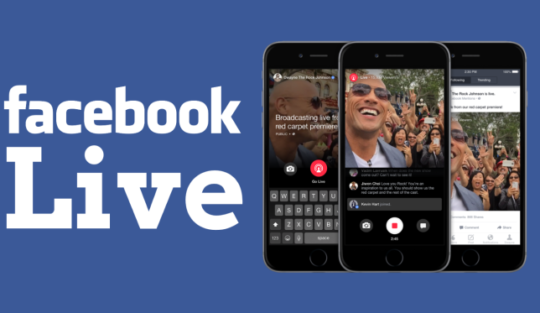You may have noticed a growing trend at your local dirt track. Fans seated in the grandstands have taken to using their cell phones to film races for live broadcast on mediums such as Facebook Live, Instagram Live, or Periscope. Even if you haven’t noticed, some promoters have. As a matter of fact, some of those who organize dirt track races have grown increasingly worried about the practice.
That said, I recently conducted a poll from my Twitter account(@RichardAllenIDR) to see just how worried promoters ought to be over live filming.
The question posed read as such: Would you ever miss going to a race because you thought you might be able to watch a fan broadcast it on social media from the grandstand?
The results that came in proved to be the most one-sided of any poll I have ever conducted on my various social media accounts. A staggering 92% of the 572 folks who responded declared that they would not miss a race on the odd chance that someone who they happen to follow might post a video on Periscope or Facebook that they could watch instead.
Although those numbers were indeed decidedly against the idea of skipping an event in hopes of watching it live, I have to say that I was not necessarily surprised. I’ve seen a few of the videos in question and have been wholly unimpressed. They are typically shaky, poorly lit, out-of-focus, and often provide no significant details.
Promoters, my contention is that anyone who watches one of these broadcasts was never coming to your race anyway. They are looking in on social media because of work responsibilities, sickness, or their distance from the track. So, you are not missing out on any gate revenue as a result of these fan produced postings.
Further, I would contend that any exposure is good exposure. A fan who does happen to see one of these videos may very well realize that if the action appears that enticing while being viewed on a mediocre Facebook post then it must be really good to witness in person.
Allow me to offer an example.
Before Speedway Motorsports, Inc. took over Bristol Motor Speedway, the previous ownership of that track was opposed to any live television coverage for fear that it would hurt race day attendance. Once live television came to be employed from the track, it built the high-banked speedway into the massive stadium complex it is today. When more people had the opportunity to see the excitement that goes on during race day, they decided they wanted to be a part of it.
Granted, BMS may not fill its 160,000 seats today, but that’s because of poor decisions made by the sanctioning body and the track surface’s reconfiguration since then. TV exposure made Bristol races a happening, not just a race during the time when the track experienced more than 20 consecutive sellouts.
Golden Isles Speedway in Waynesville, GA had its Lucas Oil Late Model Dirt Series races held in February were broadcast on Lucas Oil TV yet the track had to bring in some of the old grandstands from Daytona International Speedway to accommodate the crowd for this year’s two-day event. And that was well produced, high quality video coverage, not some haphazard, low quality Periscope broadcast.
Exposure helps.
My belief is that these live videos have virtually no impact on race-day attendance. If anything, they provide additional exposure that may cause someone to visit the facility in question at a later date. Further, I don’t believe technology such as series website timing & scoring, Race Monitor, or even live updates like the ones provided on this website keep people away. Again, anyone who uses these mediums was, in all likelihood, not coming to the track anyway. But they might on another date after having the opportunity to see what they are missing out on.
*While I did offer my views on filming from the race track itself in this piece, I did not touch on the unauthorized sharing of pay-per-view shows onto social media. That’s outright piracy and should be treated as such.






